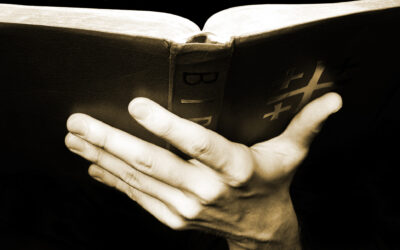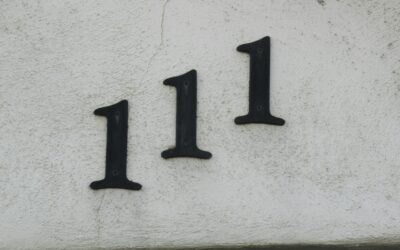There are so many versions of the Bible today. In fact in Bible.com alone, there are 3,098 versions in 2,054 languages. So what do all these versions mean, and which one do Catholics use? Let me answer these questions in this article.
Catholics can use any Bible that received proper ecclesiastical approval. It should also consist of 27 books in the New Testament and 46 in the Old Testament. Popular choices include the New American Bible Revised Edition (NABRE), Revised Standard Version Catholic Edition (RSVCE), and the New Revised Standard Version Catholic Edition (NRSVCE).
That said, there are certain requirements for a Bible version to be considered a Catholic Bible. Continue reading to find out what these requirements are and who exactly gets to approve what translations and versions are suitable to be used by Catholics for studying and praying.
What is a Catholic Bible?
Catholics should use Catholic edition Bibles. This means that they should consist of 73 books, wherein 27 are in the New Testament and 46 are in the Old Testament. So why is this important? Well, because compared to other Christian Bibles, a Catholic edition has more books than Protestant ones and fewer books than Orthodox versions.
As mentioned, the Roman Catholic Bible has 73 books with 27 in the New Testament and 46 in the Old Testament. Meanwhile, most Protestant Bibles have 66 books, wherein 27 are in the New Testament and 39 in the Old Testament. On the other hand, the Ethiopian Orthodox Bibles have 81 books with 35 in the New Testament and 46 in the Old.
Both Protestant and Catholic Bibles consider the same books in the New Testament as canon. What makes them different is that Catholic editions contain seven additional books: Judith, Tobit, Wisdom of Solomon, Sirach, 1 Maccabees, 2 Maccabees, and Baruch. Jews and Protestants call such books “Apocrypha”, but they are properly called “deuterocanonical books” in the Catholic Church.
Now, the Orthodox Bible and the Catholic Bible both consist of the same books. The only difference is that the Orthodox Bible considers several additional books as canon, such as 3 and 4 Maccabees, 1 Esdras, Psalm 151, and the Prayer of Manasseh in Chronicles.
Other Requirements to be Considered a Catholic Bible
For a version to be considered a Catholic Bible, it has to have two things: Nihil Obstat and Imprimatur. Let’s look into these in more detail below.
- Nihil Obstat: In Latin, this phrase means “nothing stands in the way” or “nothing hinders”. In the Roman Catholic Church, it is a certification by the officially appointed censor, indicating that it has been thoroughly examined and found to have nothing that goes against the Catholic faith and morals. Such a certification attests that the work, translation, or version means it is safe to be forwarded to the bishop for review.
- Imprimatur: From the Latin word “imprimere”, which meant to “impress” or “imprint”, this term refers to the official approval by the Roman Catholic clergy, which is usually the bishop. That said, it is the bishop’s official approval and declaration that the book does not have doctrinal errors and that it is cleared for publication.
Take note that such a process is required not only for Bibles but also for prayer books, catechetical materials, and any work related to Sacred Scripture, canon law, theology, the history of the Church, and religious or moral disciplines. This can be seen in the Code of Canon Law, 823, which states:
- “In order to preserve the integrity of the truths of faith and morals, the pastors of the Church have the duty and right to be watchful so that no harm is done to the faith or morals of the Christian faithful through writings or the use of instruments of social communication. They also have the duty and right to demand that writings to be published by the Christian faithful which touch upon faith or morals be submitted to their judgment and have the duty and right to condemn writings which harm correct faith or good morals.
- Bishops, individually or gathered in particular councils or conferences of bishops, have the duty and right mentioned in 1 with regard to the Christian faithful entrusted to their care; the supreme authority of the Church, however, has this duty and right with regard to the entire people of God.”
As such, Bibles and all books and materials, without the approval of qualified ecclesiastical authority, cannot be used as textbooks in education. Similarly, works that tackle faith and morals may not be sold, exhibited, and distributed in Churches or oratories unless they’re approved by competent ecclesiastical authority.
Approved Bible Versions for Catholic
With so many Bible versions available today, it can be difficult to know which ones are suitable for Catholic use. So to help you out, below are lists of approved Bible versions according to two sources.
Here’s a list of the translations of the Sacred Scriptures that have received the approval of the United States Conference of Catholic Bishops (USCCB) for private use and study:
- New American Bible, Revised Edition (NABRE)
- New Revised Standard Version, Catholic Edition, National Council of Churches (NRSVCE)
- Good News Translation (Today’s English Version, Second Edition), American Bible Society
- Books of the New Testament
- Contemporary English Version – New Testament, First Edition, American Bible Society
- Contemporary English Version – Book of Psalms, American Bible Society
- Contemporary English Version – Book of Proverbs, American Bible Society
- The Grail Psalter (Inclusive Language Version)
- The Psalms
- The Psalms (New International Version) – St. Joseph Catholic Edition
- The Psalms – St. Joseph New Catholic Version
- Revised Psalms of the New American Bible
- So You May Believe, A Translation of the Four Gospels
- Translation for Early Youth, A Translation of the New Testament for Children, Contemporary English Version
uCatholic also released its own list of approved English Catholic Bibles, including the following:
- New American Bible, Revised Edition (NABRE)
- Ignatius Bible
- Good News Bible: Catholic Edition
- New Jerusalem Bible
- New Revised Standard Version Catholic Edition
- Jerusalem Bible
- Revised Standard Version Catholic Edition
- Douay-Rheims Bible
Why Are There Different Versions of the Bible?
Now, let’s go to why there are so many different versions of the Bible. Does this mean that some versions are wrong, or do they contain different things? Well, not quite.
There are many versions of the Bible because, for one, it’s a marketing strategy. This is why you’ll see Bibles that are aimed at students, soldiers, men, and women. However, their actual content and text are the same.
Secondly, there’s this thing called “translation philosophy”. This refers to how the translators approached translating the manuscript of the Bible. Here are the 3 main philosophies:
- Formal Equivalence: This approach focuses on translating the manuscript word-for-word in an attempt to be as literal and accurate as possible.
- Functional Equivalence: This is a thought-for-thought translation, which means that Bibles that fall under such an approach are easier to read and understand.
- Optimal Equivalence: Here’s an approach that combines word-for-word and thought-for-thought translation, helping readers understand the text better.





